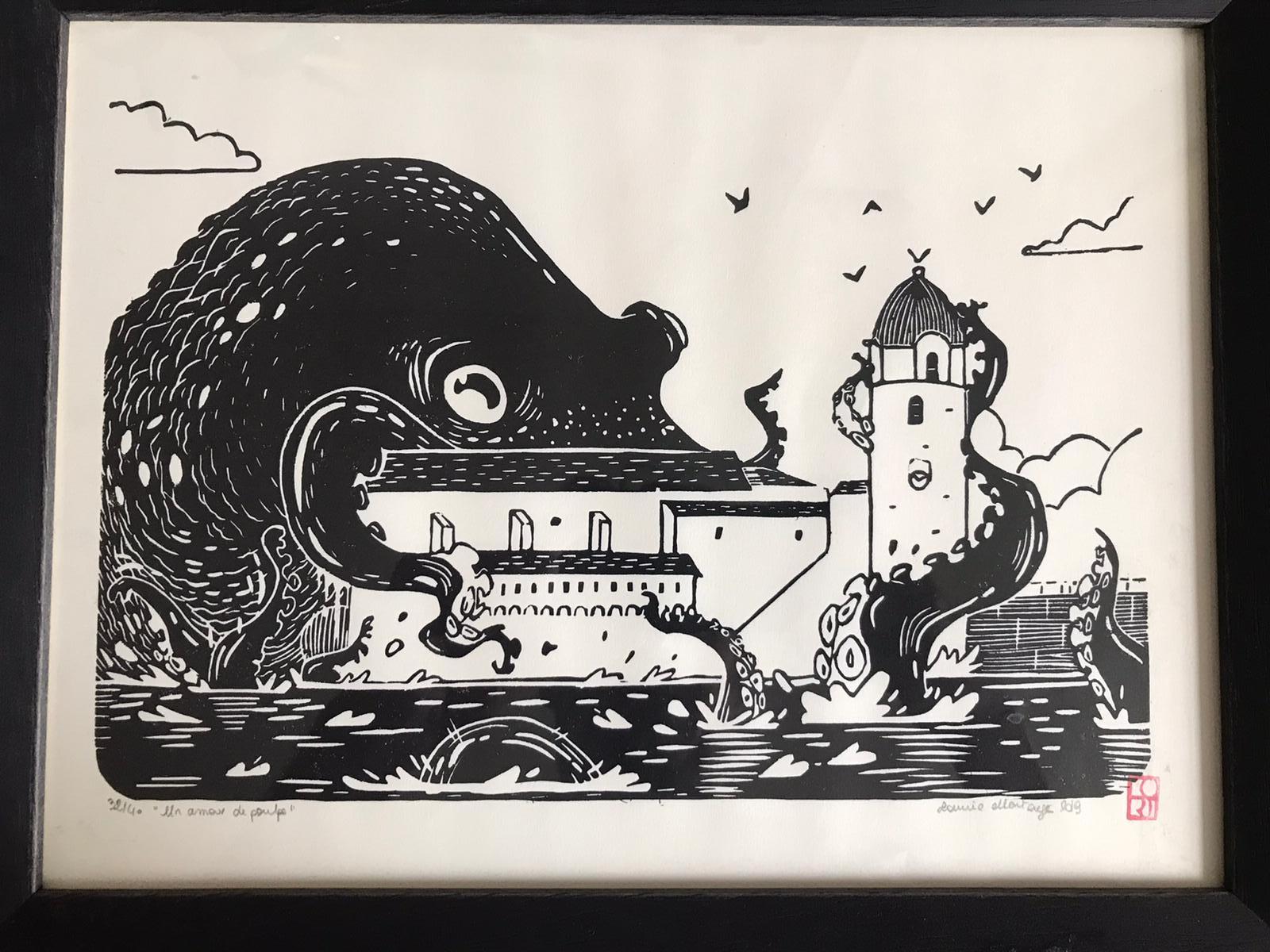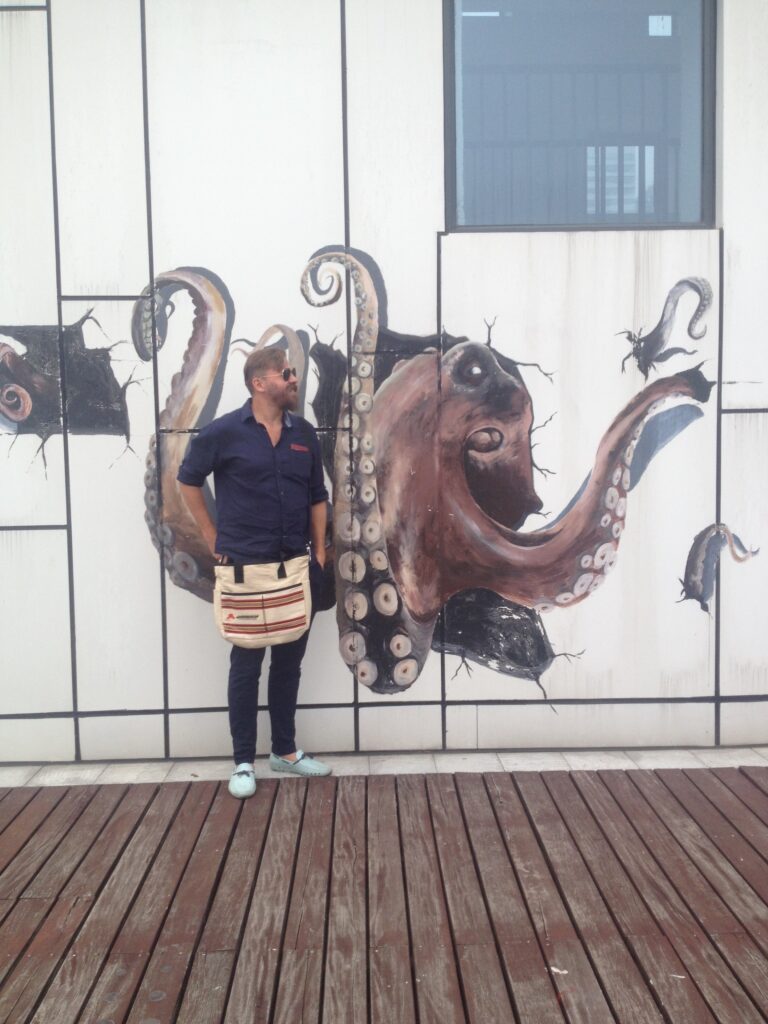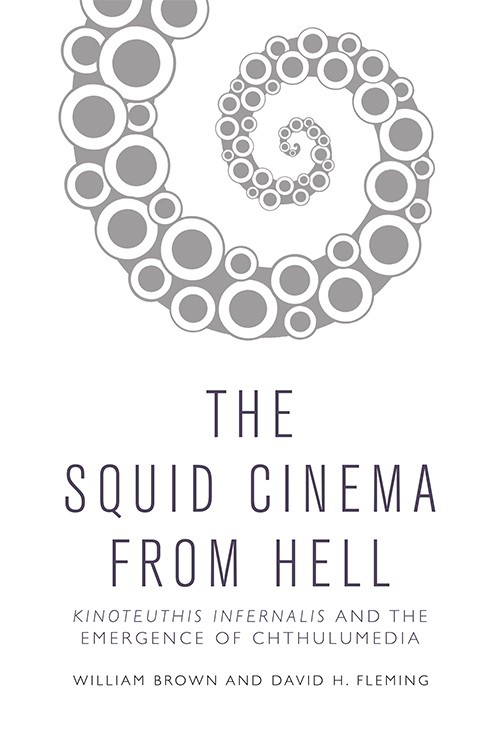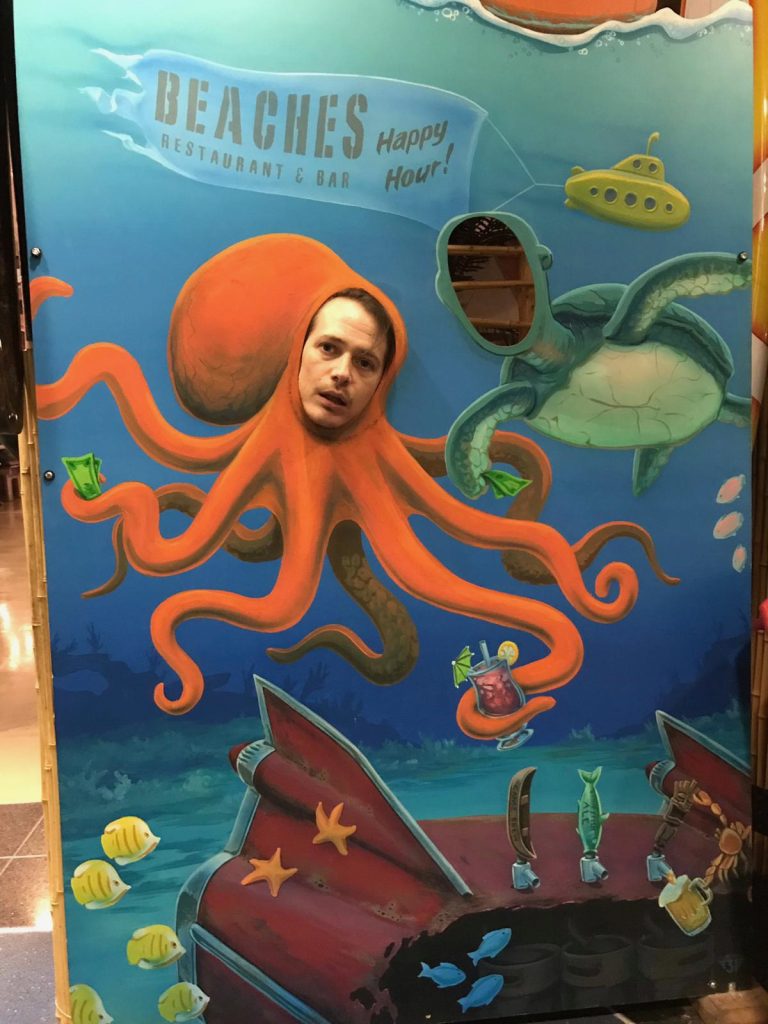
By David H. Fleming and William Brown
We began writing The Squid Cinema from Hell together at some point in 2016. But, we likely began sharing thoughts on cephalopods and cinema during a visiting scholar trip that allowed Will to travel out to China in December 2015, where David was then working. At this point we had both just finished writing monographs about the ‘outside’ of cinema, or that which falls outside of the cinematic society (see Brown’s Non-Cinema and Fleming’s Unbecoming Cinema, respectively), and we were planning to write a book together on mud in cinema. We discussed this intensely during the trip. However, over the following months we most commonly found ourselves sharing ongoing parallel encounters with squids and octopuses (on screens or paper). When we both attended the Film-Philosophy conference in Edinburgh 2016, we decided that we would write a short book together on cephalopods and cinema—as a warm up for the mud book. Octopuses often disguise themselves as mud using their skin-screens, we noted, in order to avoid detection.
It’s fair to say that The Squid Cinema from Hell covers a lot of material and technologies between its eight chapters, conducting as it does a weird media archaeology of global films, music videos, hentai pornography, sculpture, machines, technologies, and multiple other art and image forms. We feel like we trawled and dredged up a lot. But of course, no book can ever cover everything its authors want it to. There thus remain so many things we simply had to cut, withdraw, or jettison to come in on size and on time. We have also discovered many other artefacts and arguments since, which we shamefully remained ignorant of at the time.
One of the wordplays that we make in book is the idea that the universe is a single worm, from the French ver, meaning worm—a link between verse and worms that poets like Charles Baudelaire have made long before us. If the universe thus is a single, invertebrate worm, with its eight legs, the octopus constitutes a multi-verse. And so, in what remains of this blog post, we hope to list eight (of course!) other ver-sions of our introduction, which although marginally or not even included in the book itself, are, we feel, clearly linked to the broader evental project, and which thus can help us to introduce the book here. These will in turn be expanded in an extended post you can also access here.
1. The Arrival of an Octopus at the (Train) Station

Ahead of a trip to Paris in the summer of 2018 William noticed that a giant octopus was situated on a booth in the London Eurostar terminal. Curious, he shelled out for what was essentially a set of cardboard glasses, but into which one could insert one’s smartphone so as to turn it into a viewing screen for a VR experience entitled Eurostar Odyssey: A Virtual Voyage of Discovery. While somewhat uneventful as a VR experience, this immersive experience did index encounters with our totem animal of digital culture, the octopus.
2. A cephalopodic agencement of software, projection, and architecture in Collioure

Continuing the French connection, the charming southern village of Collioure is an important geographic location for both of us. In the expanded blog we will discuss how since 2014, the bay of Collioure has borne witness to the annual return of a peculiar species of chthulumedia that sees the town’s iconic round-towered church become a ‘living canvas’ for a unique projection mapping show that we frame as a computational approximation of cephalopodic “skin painting in time.”
3. Eurocentric “Chthulutelevision”
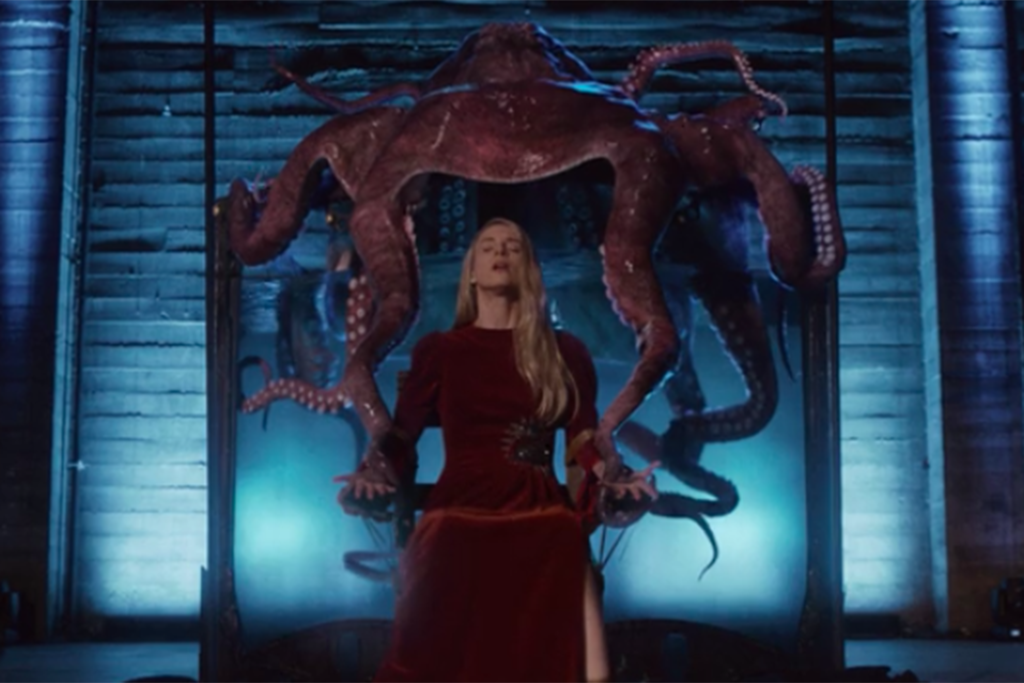
In The Squid Cinema from Hell we namecheck various “chthulutelevision” shows, including Sense8 (2015-2018) and The O.A. (2016-2019) which demonstrate a high fidelity with the broader event we chart. In naming these, we admit that there were many others that we simply didn’t have the time or space to do justice to in that volume. Thus, we take a chance to expand on these in the larger linked blog.
4. Inky octopuses in illustrated kids’ books
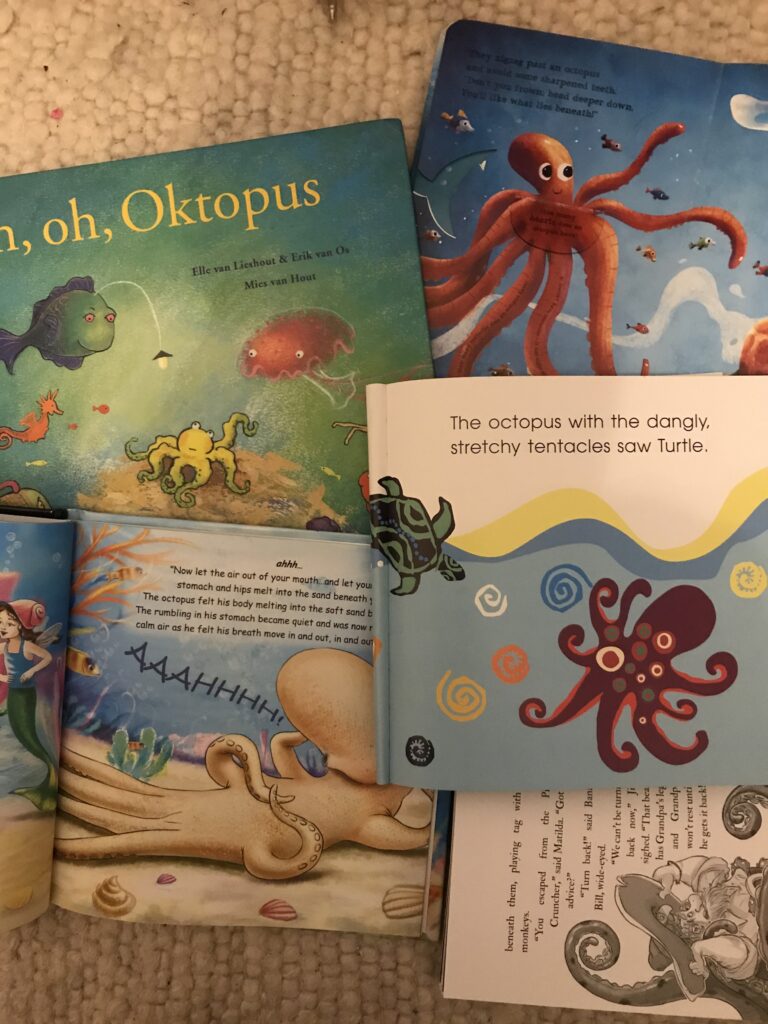
Throughout The Squid Cinema from Hell, we survey a wide range of literary and pulp (e-)works that eventally channel cephalopods and betentacled monsters. For reasons we needn’t go into here, David was sent another self-help book featuring an octopus by his sibling during the Covid-19 lockdown… to help with the affected behaviour of his four-year old. This gave pause to reflect on how common cephalopods were in his daughter’s illustrated library. Why?
5. Tentacular, Volumetric and Mètic Video Games

We remain cognizant of how the tentacles of the video game industry stretch into the worlds of cinema, (sub)culture, economics, entertainment, sport, (bio)politics, pedagogy, psychology and biology among others. What is more, our friends who playfully interact with software machines inform us that tentacled monsters abound in contemporary computer games as they do in cinema and television.
6. Chthuluvideos across the multiverse

While we spend some time in The Squid Cinema from Hell discussing various music videos by the likes of the Gorillaz and Valentino Khan, there surely is a more concerted study to be done of music videos in relation to tentacular imagery, as well as in the history of music more generally.
7. Akira Mizuta Lippit’s Oectopus
William S. Burroughs short piece, ‘Octopus’ becomes the focus of Akira Mizuta Lippit’s brilliant essay, ‘Oectopus,’ which we discovered too late for the purposes of The Squid Cinema from Hell. This omission provides us with a lesson in ongoing humility via humiliation, which we will expand on in the larger blog.
8. Breathing underwater
It seems clear to us that critical race theory and cephalo-thinking have much in common. At least, this is the chief direction in which we take our work in our upcoming book, having introduced it as a point of critical engagement towards the end of The Squid Cinema from Hell. For, if we look at critical race theory, especially work from Black Studies, then we can find numerous theorisations of the human breathing underwater, having salt water in their veins, and so on. More on which to come.
David H. Fleming is Senior Lecturer in Film & Media at the University of Stirling, Scotland. His interdisciplinary research often engages the outsides and intersectionalities of images, technology, events and philosophy. He is co-author of The Squid Cinema from Hell: Kinoteuthis Infernalis and the Emergence of Chthulhumedia with William Brown (2020), and Chinese Urban Shi-nema: Cinematicity, Society and Millennial China (2020) with Simon Harrison. He is also the author of Unbecoming Cinema: Unsettling encounters with ethical event films (2017). David is currently working on an essay film about Hibs and Cinema, and books about infinite ontologly and ‘chthulutelevision,’ and mud.
William Brown is an Honorary Fellow in Film at the University of Roehampton, London. He is co-author of The Squid Cinema from Hell: Kinoteuthis Infernalis and the Emergence of Chthulhumedia with David H. Fleming (EUP, 2020), and the author of Non-Cinema: Global Digital Filmmaking the Multitude (Bloomsbury, 2018), and Supercinema: Film-Philosophy for the Digital Age (Berghahn, 2013). William is also the maker of various no-budget films and film-essays, and currently is working on two books, one about ‘infinite ontology’ and ‘chthulutelevision,’ and another about mud and media.


